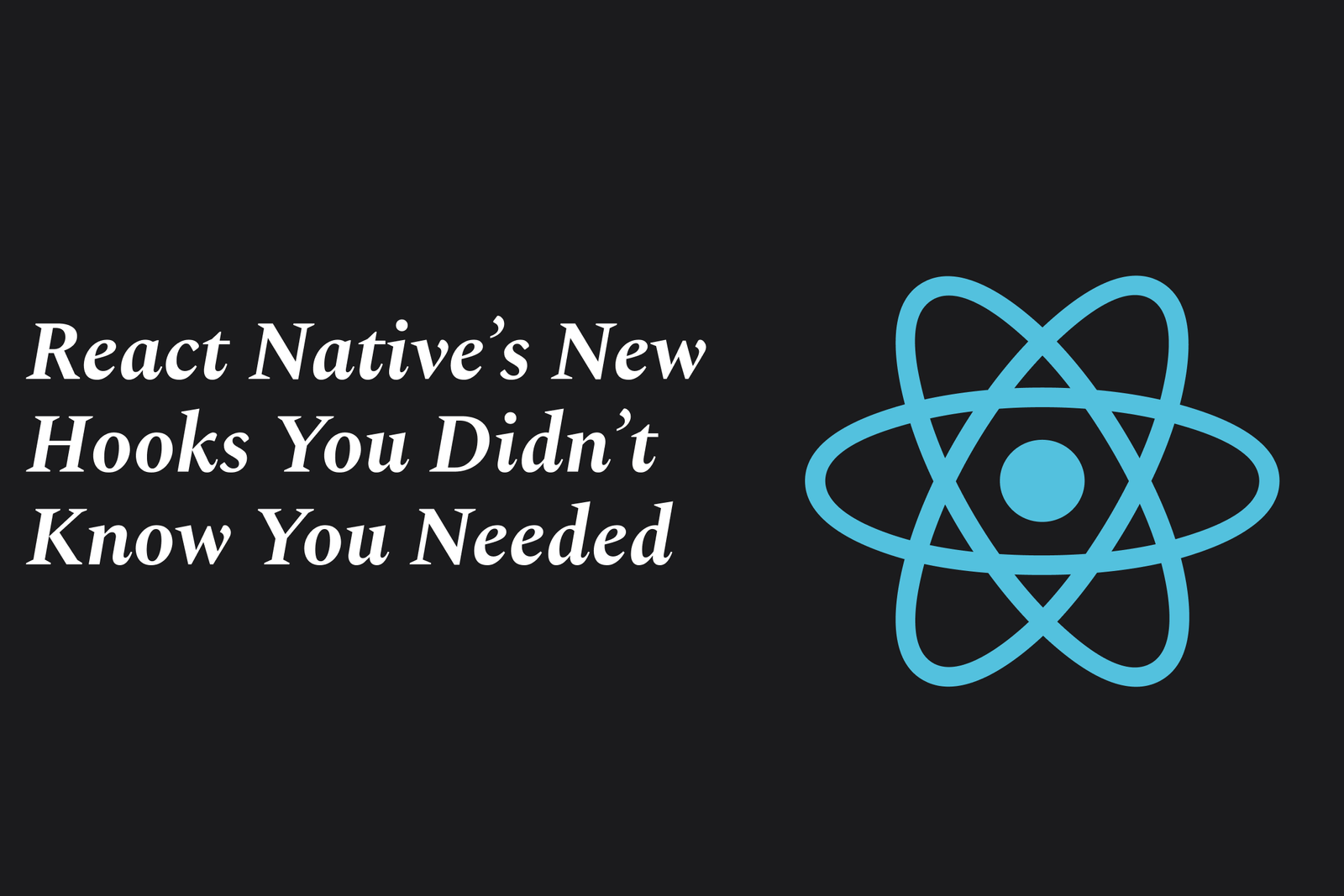React Native?S New Hooks You Didn?T Know You Needed
React Native’s new hooks simplify state and lifecycle management with powerful, easy-to-use APIs like `useFocusEffect` and `useAnimatedStyle`. These hooks enhance performance and code clarity, helping developers build smoother, more responsive mobile apps effortlessly.
React Native’s New Hooks You Didn’t Know You Needed
1 ) Introduction to Memoization Hooks: useMemo and useCallback
React Native developers frequently encounter the hooks `useMemo` and `useCallback`, which are intended to optimize performance by caching values or functions between renders.
These hooks prevent unnecessary recalculations or function recreations by preserving references during component re renders.
However, their usage is often misunderstood and overused, leading to bloated and hard to maintain codebases.
2 ) The Purpose of useMemo and useCallback
Both hooks provide memoization to avoid recreating complex objects or functions on every render.
For example, `useMemo` caches the result of an expensive calculation, returning the cached value unless dependencies change.
`useCallback` caches a function reference to prevent unnecessary re creation, useful when passing callbacks as props.
Proper use ensures that React hooks like `useEffect` don’t trigger on every render due to changed references, but only when actual dependency values change.
3 ) Common Misconceptions and Overuse
Many developers wrap almost all functions and objects in these hooks indiscriminately, under the assumption that it always improves performance.
Ironically, excessive use can degrade performance during the initial render because React must perform memoization work.
Often, memoization is only beneficial when preventing re renders caused by changing prop references or avoiding expensive recalculations.
4 ) Practical Use Cases: Memoizing Props to Prevent Re renders
A frequent use case is memoizing callback functions passed as props to child components.
Without `useCallback`, a new function instance is created each render, causing child components to re render unnecessarily.
Example: Wrapping an `onClick` handler with `useCallback` ensures it retains the same reference between renders unless dependencies change, optimizing render cycles.
5 ) Key Takeaways for Effective Use
Use `useMemo` and `useCallback` sparingly and only when:
You want to avoid expensive recalculations on every render.
You need stable function or object references to prevent unnecessary re renders in child components.
Avoid blanket usage; analyze if memoization actually benefits the component.
Remember, initial renders might be slightly slower with these hooks, so balance optimization against complexity.
Simplify your code by removing unnecessary memoizations, which can make your codebase cleaner and potentially faster.
This article sheds light on the subtle but important nuances of React Native’s hooks `useMemo` and `useCallback`. Understanding their right use can prevent bloated, hard to read code and improve app performance. Most importantly, developers should avoid reflexively adding them everywhere and instead apply them deliberately where they truly make a difference.
https://justacademy.in/news-detail/android-system-permissions-overview
https://justacademy.in/news-detail/android-apps-leveraging-cloud-computing
https://justacademy.in/news-detail/flutter-layout-grid-system-update
https://justacademy.in/news-detail/android-smart-lock-and-security-features
https://justacademy.in/news-detail/flutter-community-meetups-in-2025
Related Posts
Java supports GDPR and data privacy by enabling secure data handling through encryption, controlled access, and precise data management. It allows developers to minimize PII exposure, ensure data confidentiality, and design workflows that comply with data protection regulations effectively.
Java code quality tools have evolved to include advanced static analysis, integrated security checks, and AI-powered code reviews. These updates help developers detect bugs, enforce coding standards, and enhance security, streamlining the development process and improving overall code reliability.
Java remains a cornerstone in big tech companies, evolving with modern features like records, pattern matching, and virtual threads. Its robust ecosystem, enhanced performance, and growing AI integrations keep it vital for both legacy systems and innovative new projects.
Java and CI/CD pipeline optimizations streamline Java application development by automating builds, tests, and deployments. They improve efficiency through parallelization, caching, and secure secrets management, enabling faster feedback loops and more reliable, scalable software delivery.
Java supports modern cryptography standards through its flexible Java Cryptography Architecture (JCA), enabling integration of advanced algorithms like AES, EdDSA, and post-quantum tools. Libraries like Bouncy Castle offer FIPS-certified, hardware-accelerated implementations for secure development.
Java 23 enhances record patterns by enabling concise, direct destructuring of record components within pattern matching, simplifying type checks and data extraction. This improvement boosts code readability and expressiveness by reducing boilerplate in handling immutable data classes.
Java remains a top choice for mobile app backends, powering scalable, secure, and high-performance server-side solutions. Latest trends include cloud-native microservices, reactive programming, and enhanced JVM optimizations, enabling efficient, flexible, and robust mobile backend development.
Java SE 24 and LTS Java SE 21 offer enhanced features and performance, while Apache Spark 4.0.0 introduces Scala 2.13 support and advanced ML and SQL capabilities. Together, they empower developers to build scalable, high-performance data applications with modern tools.
JUnit 5 modernizes Java testing with a modular architecture, improved assertions, and seamless Java 8+ support. Beyond JUnit, tools like Mockito and AssertJ enhance mocking and assertions, creating a powerful, flexible ecosystem for writing clean, efficient Java unit tests.
Java plays a pivotal role in cloud automation tools by providing a robust, platform-independent language used to build scalable automation frameworks like Jenkins and Selenium, enabling efficient CI/CD pipelines, testing, and orchestration across diverse cloud environments.










